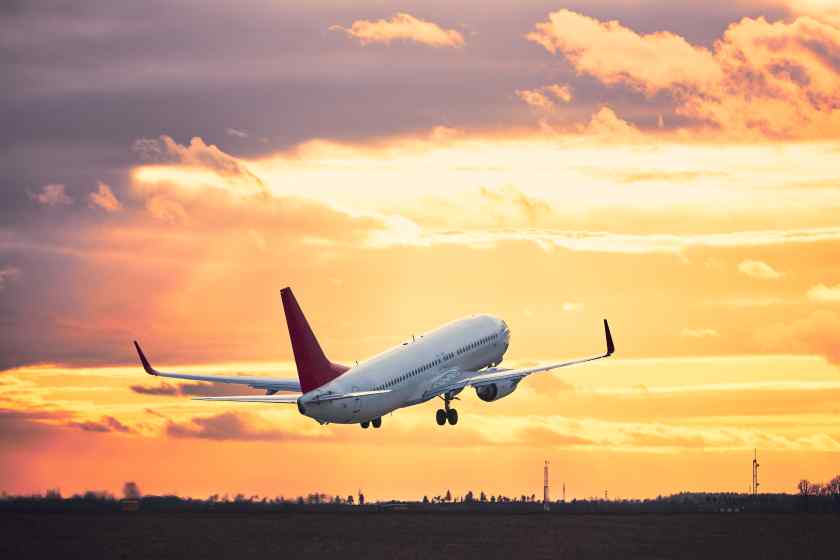Friday, June 27, 2025

Scandinavian Airlines (SAS) is set to resume operations to India after a period of 17 years on its Copenhagen-Mumbai direct flights. The non-stop flight, commencing June 2, 2026, is part of SAS’s intercontinental network growth, affirming its hub at Copenhagen Airport as well as intensifying connectivity into one of the world’s largest and most dynamic economies.
This new connection between Scandinavia and India is expected to further strengthen the ties between the two regions, providing seamless access to major destinations in Europe and North America. The route also reflects SAS’s strategy to cater to the growing demand for travel to and from India, driven by the country’s rapid economic growth and expanding tourism sector.
Five Weekly Flights with Airbus A330
Starting in June 2026, SAS will operate five weekly flights on the Copenhagen-Mumbai route, using an Airbus A330 aircraft. The service will offer nonstop connections between the Danish capital and India’s financial hub, Mumbai. The flights will cater to both business and leisure travelers, providing them with an efficient and convenient way to travel between Scandinavia and India.
This move marks SAS’s return to the Indian market after a gap of 17 years. The airline’s return to India comes at a time when the country’s economy is booming, and demand for international air travel is growing rapidly. As one of the world’s fastest-growing major economies, India presents an attractive market for airlines seeking to expand their global networks.
Anko van der Werff, President & CEO of SAS, explained the importance of the new route: “India is a key global market, both in terms of growing demand and economic importance. With this new route, SAS contributes to strengthening Copenhagen’s role as a global hub while supporting increased connectivity between India and Northern Europe, as well as between India and North America.”
Connecting Scandinavia, Europe, and North America
The Copenhagen-Mumbai flight times are designed to facilitate easy and quick transfers to and from major destinations in Scandinavia, Europe, and North America. With convenient connections through Copenhagen, travelers can seamlessly continue their journey to and from cities like New York, Boston, Toronto, and other key destinations. This is especially advantageous for travelers from India heading to or from North America, offering them a smoother and faster transfer at one of Europe’s busiest airports.
SAS’s new route is set to enhance Copenhagen’s position as a significant hub for international travel. With this direct connection to Mumbai, SAS will provide travelers with more options and better access to one of the most vibrant and essential regions in the world for business and tourism.
SAS’s Expansion Strategy and Focus on India
SAS’s re-entry into the Indian market is part of the airline’s broader strategy to grow its intercontinental network. This move follows the increasing demand for direct connectivity between Scandinavia and emerging global markets like India. The airline’s expansion into India highlights its commitment to supporting both business and leisure travel, recognizing the importance of Mumbai not only as a major economic center but also as a popular tourist destination.
India’s fast-growing tourism sector has made the country a key focus for many international airlines, with SAS keen to tap into this expanding market. The route is expected to attract tourists from Europe and Scandinavia looking to visit India’s cultural landmarks, beaches, and vibrant cities. Meanwhile, Indian travelers will benefit from increased access to Europe, the US, and other destinations that SAS serves.
Strengthening Copenhagen Airport’s Role as a Global Hub
With the introduction of direct flights to Mumbai, Copenhagen Airport will further solidify its position as a central gateway for international travelers. The airport already serves as a major hub for Scandinavian and European travelers, with extensive connections to cities across the continent. Adding Mumbai to the list of direct destinations will make Copenhagen even more attractive for global airlines and travelers looking for efficient access to and from India.
The new SAS route comes on the heels of other recent developments at Copenhagen Airport, including the expansion of terminal facilities and the introduction of additional long-haul routes. SAS’s growing intercontinental network, including the new Copenhagen-Mumbai route, is expected to contribute to the airport’s increasing role as a central hub for travel between Scandinavia, Europe, and the rest of the world.
SAS’s Commitment to Sustainable Aviation
SAS has also committed to sustainability in its operations, making the introduction of new routes an opportunity to reduce its environmental impact. The airline is investing in modern, fuel-efficient aircraft like the Airbus A330, which is part of its fleet renewal program. The A330’s eco-friendly features help reduce carbon emissions, aligning with SAS’s long-term sustainability goals.
In addition to its fleet renewal, SAS is investing in carbon offset programs, promoting more sustainable travel choices, and supporting innovations in sustainable aviation fuels. With these efforts, SAS aims to reduce the environmental impact of its operations while meeting the growing demand for air travel between global destinations like Copenhagen and Mumbai.
Conclusion
SAS’s new direct route between Copenhagen and Mumbai starting June 2026 represents a significant step in the airline’s global expansion strategy. This new connection will not only strengthen ties between Scandinavia and India but also enhance the travel options available to passengers in both regions. With smooth connections to Europe, North America, and beyond, the route promises to be a popular choice for business and leisure travelers alike.
As the demand for travel to and from India continues to rise, SAS’s return to the Indian market reflects the airline’s commitment to providing travelers with greater connectivity and access to one of the world’s most important and dynamic economies.
(For more information, visit SAS Official Website.)
«Enjoyed this post? Never miss out on future posts by following us»



